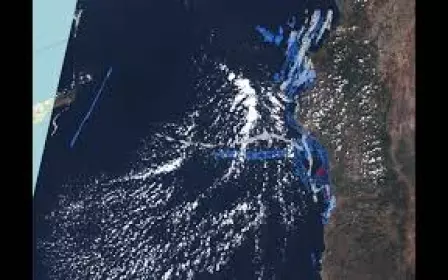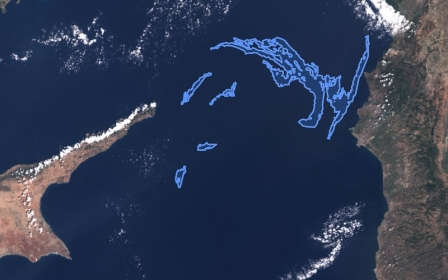Oil spill spotted in the Red Sea

Satellite imagery has revealed a 250km-long oil spill in the Red Sea.
The spill appears to have started on 19 May, with additional images from the Sentinel-2 L1C satellite the next day showing oil drifting further south from waters off the coast around the Egyptian-Sudanese border.
According to Wim Zwijnenburg of Dutch peace organisation Pax, which specialises in climate, conflict and environment, the spill appears to amount to approximately 100,000 litres of oil.
He told Middle East Eye that the slick was likely to be light fuel, rather than heavy crude oil, and dispersed by the wind. The source is currently unclear.
“This could have been either a leak or a strike on an Iranian tanker, but we have not seen any reported incidents of explosions,” Zwijnenburg told MEE.
New MEE newsletter: Jerusalem Dispatch
Sign up to get the latest insights and analysis on Israel-Palestine, alongside Turkey Unpacked and other MEE newsletters
The Red Sea is a rich and biodiverse ecosystem. It is home to one of the longest continuous reefs in the world, unique for its high tolerance of increasingly warm temperatures and projected to be among the last reef ecosystems in the world.
The sea is also one of the world’s busiest shipping lanes, with approximately 10 percent of the world’s trade passing through its waters. Oil spills are nothing new, previously they have been caused by attacks on tankers.
In October 2019, the Iranian Sabiti tanker, carrying one million barrels of crude oil, caused widespread pollution after it was allegedly struck by missiles off the coast of Saudi Arabia.
A rotting oil tanker moored off the coast of Yemen's Hodeidah, the FSO Safer, has been threatening a devastating spill since it was abandoned in 2015. The decaying vessel contains an estimated 1.14 million barrels of crude, and it is feared a spill could inflict marine ecological damage on a scale that could exceed that of the Exxon Valdez in 1989.
Experts have warned about the potentially catastrophic environmental impact of the vessel’s imminent disintegration.
The recent arrival of the Nautica tanker in Djibouti, funded through UN crowd sourcing and intended to replace the FSO Safer, coincided with the spill detected on 19 May. However, according to Zwijnenburg, this is unlikely to be the source.
“There [were] lots of ships in the Red Sea at that time, and none that we’ve been able to link with the spill,” Zwijnenburg told MEE.
Middle East Eye delivers independent and unrivalled coverage and analysis of the Middle East, North Africa and beyond. To learn more about republishing this content and the associated fees, please fill out this form. More about MEE can be found here.




